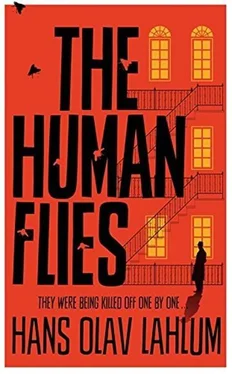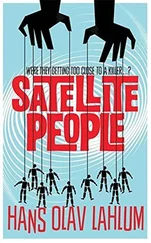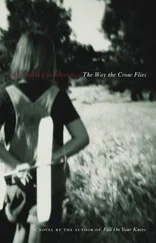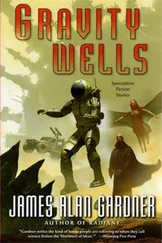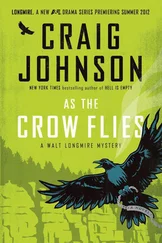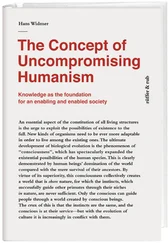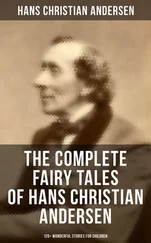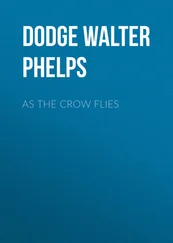To begin with, I was disappointed. Then I laughed, despite the setback it meant for me, as the cocksure Miss Patricia’s creative theory had not held. I put the record on again and increased the volume before going over to Harald Olesen’s telephone and dialling the number on the slip of paper in my wallet.
Patricia picked up the phone before the second ring. I could actually hear her surprise, prompted by the music, and so talked louder than necessary to drown it out.
‘I am in Harald Olesen’s flat and have turned on the record player and listened to the whole record. And as you can hear, it seems to be a red herring.’
There was silence for a moment on the other end of the line. It is possible that Patricia doubted herself and her theory for a matter of seconds, but it certainly did not last long.
‘But that has to be it. There is no other credible solution. Is the record player free-standing, or is it part of one of these newfangled stereo systems with a cassette player?’
I glanced quickly over at the record player and was immediately gripped by uncertainty. The record player was indeed part of a big new stereo system with a cassette player – and there was a cassette in the player. Patricia’s response was as quick as a flash when she heard this.
‘Then the cassette player has to be the answer. Play the cassette that is there, but turn down the volume in order not to terrify the whole building if – I mean when there is a gunshot. Call me again when you have played the cassette. But of course, if there is no gunshot on the cassette either, there is no need for you to waste any more time in calling me again.’
Thus spoke Patricia Louise I. E. Borchmann – without drawing breath. Then she put down the phone without saying goodbye.
I looked at the stereo, full of doubt, but then turned off the record player and rewound the cassette to the start. The cassette looked genuine enough, and the German writing promised Beethoven’s Ninth Symphony. It seemed to take an eternity to rewind. When it had finally rewound to the start, I reduced the volume by a couple of notches and sat down to wait for the cassette to crank into action. It started, as expected, with Beethoven’s Ninth Symphony. I immediately wondered if this was the most valuable use of my time. However, the music stopped with a loud click after only a couple of minutes. The cassette then crept forwards as slowly as could be for the next twenty-five minutes. At first, I paced around the room, but as the tape got ever closer to the end, I moved ever closer to the large loudspeakers of the stereo player.
I expected the tape to stop at any moment when suddenly there was another muffled click, followed by a loud gunshot.
Despite having turned down the volume, it exploded like an atomic bomb in my ears. I jumped and then watched paralysed as the cassette stopped. I stood there for five minutes, puzzling over whose hand might have started this tape recording the last time it played.
When I eventually managed to pull myself together and phone back, she answered the phone on the first ring. ‘Was the gunshot at the very end?’ she asked.
I mumbled a subdued ‘yes’, an even more muffled ‘congratulations’ and a somewhat louder explanation that the gunshot was right at the end of a cassette of Beethoven’s Ninth Symphony. I could almost feel the receiver quiver as she breathed out.
‘Thank goodness for that. I was almost starting to get worried. Remember to check the cassette and stereo player for fingerprints, but do not be disappointed if there are none. We are dealing with a particularly Machiavellian murderer.’
I replied that that was quite clearly the case, but that it did help to know how he had escaped and to have adjusted the time of the murder to nearly twenty-five minutes earlier. This seemed to confuse her somewhat.
‘Hold on a minute. Firstly, I am not at all certain that the murderer is a he, and secondly, where did you get the twenty-five minutes from?’
I smiled to myself that I was ahead of her this time and informed her that the cassette had a playing time of twenty-five minutes. I waited for the ‘aha’ exclamation, but instead got only a small sigh of relief and another ruthless question.
‘But we have no evidence that the murderer put on the cassette immediately after he or she carried out the murder, do we?’
And of course I had to admit that we didn’t. The murderer could in theory have waited for as long as he – or she – wanted in the flat before starting the cassette and leaving. Equally, the tape might have been wound forward so that the murder took place only minutes before the gunshot. Suddenly, it became of far more interest that the pathologist had only been able to narrow the time of death down to between eight and eleven. Patricia and I promptly agreed that any of the residents who did not have a watertight alibi for the period from eight until ten past ten must be seen as potential murderers. We also quickly agreed that I should return and discuss the situation with her before talking to the neighbours again.
Half an hour later, I was back sitting in the library at the White House in front of Princess Patricia. She was nibbling happily on a large carrot, like an unusually self-satisfied rabbit. With the carrot in her left hand, she wrote down key words at perfect speed with her right, while I sipped my tea and repeated the neighbours’ statements. It occurred to me more than once that this was a breathtaking breach of standard investigation procedure, which could cause enormous problems for me should it ever get out. But it also struck me as unthinkable that either the father or daughter would ever let the secret slip. My childhood trust in the Borchmann family was deeply ingrained. Furthermore, I firmly believed that there was more help to be had here. And last of all, I had to admit to myself, and mark my words to myself alone, that help may be needed if Harald Olesen’s clearly cunning murderer was to be caught.
Patricia proved for the first time to be a good listener, as she patiently heard out my long account of what had been found in the case so far. Several times I noticed a twinkle in her eyes, but when I made signs of stopping, she motioned impatiently for me to continue.
‘That was very interesting and informative on certain points,’ she said, when I had finished, sometime around four o’clock. I chose to take that as a huge compliment.
‘So, who killed Harald Olesen?’ I asked pointedly.
She gave me a small smile as she shook her head apologetically.
‘Investigating a murder when the perpetrator is unknown is in many ways similar to painting a portrait. On Thursday night, we had a blank canvas, but have now managed to sketch a few characteristics, which will then lead to more. Even though it may all become clear soon, it may still take a considerable amount of hard work before the face is distinct enough. Despite the adjusted timeframe, it remains hard to see how the murderer could get in before the murder without being seen – or escape afterwards. Given what we know, he or she can still only be one of the other residents. But we have to keep our options open. As the murder took place sometime between eight and ten past ten, everyone who was in the building – with the exception of the baby, of course – had the opportunity, in theory.’
I looked at her and hesitated, but then ventured a slight objection.
‘Don’t you think we can rule out the man in the wheelchair?’
She shook her head and pushed back her own chair.
‘Not at all. Nothing that we know thus far rules out the possibility that a man in a wheelchair, who is otherwise healthy, might have committed the murder, alone or in collaboration with others. You must ask him in more detail about how he came to be in a wheelchair and just how serious it is. Even the caretaker’s wife, until proven innocent, is a potential murderer.’
Читать дальше
